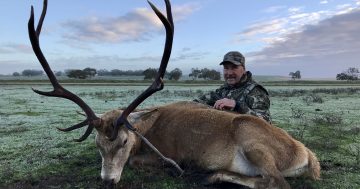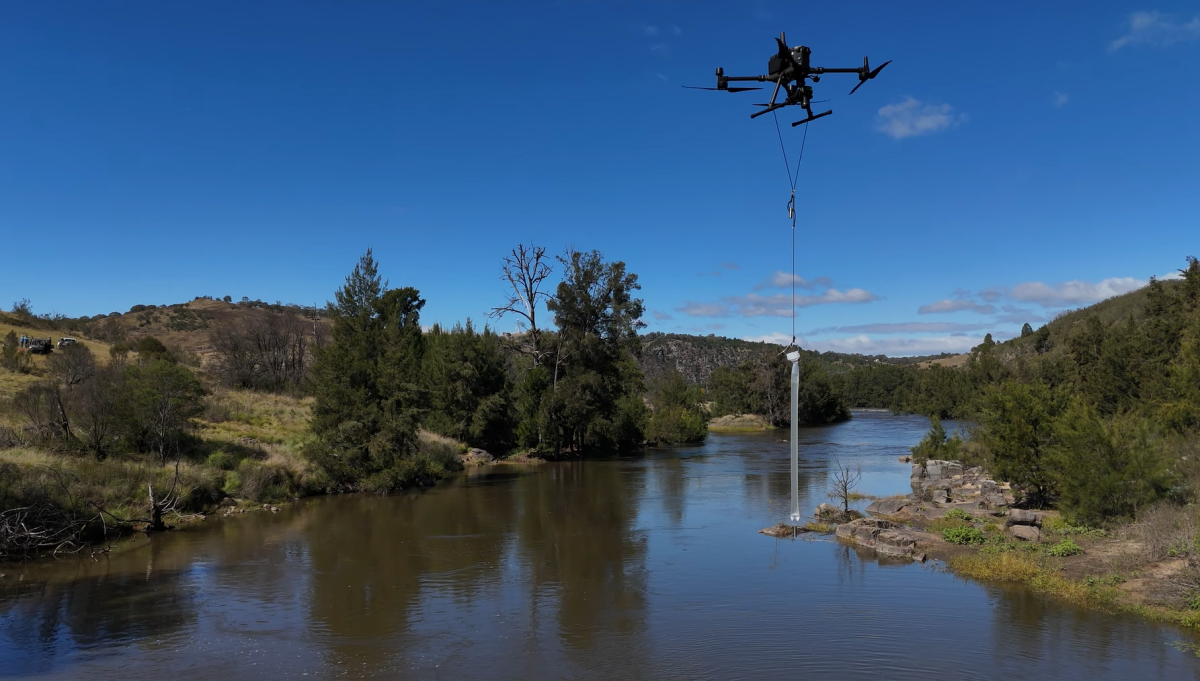
The drone with ‘HydroSleeve’ attached flew over five square kilometres of Ginninderry Conservation Corridor. Photo: Department of Agriculture, Fisheries and Forestry.
Trudging through the rough terrain on foot, collecting water samples along the way, would have taken more than an hour. As it is, the job of working out how many feral deer live in the ACT’s north took no more than 15 minutes, in a revolutionary new trial by the Federal Government.
The Invasive Species Council describes feral deer as “probably Australia’s worst emerging pest animal problem”, with total numbers exploding from 50,000 in 1980 to between one and two million today.
The damage they cause is estimated to cost Australian communities and primary producers $91 million a year.
They derail land regeneration programs by ring-barking young trees, trample on native wildlife habitats and destroy grazing lands by creating large wallows.
States and territories have made individual attempts to get on top of them – for example, NSW has removed the protected ‘game’ status and designated deer a pest.
But in April last year, the Federal Government launched the first ‘National Feral Deer Action Plan’.
“Feral deer … are the ‘next rabbit’ of Australia’s feral species,” Minister for Environment and Water Tanya Plibersek said at the time.
“The National Feral Deer Action Plan will develop and trial new tools, to build capacity to detect, cull and prevent further spread of this feral pest.”
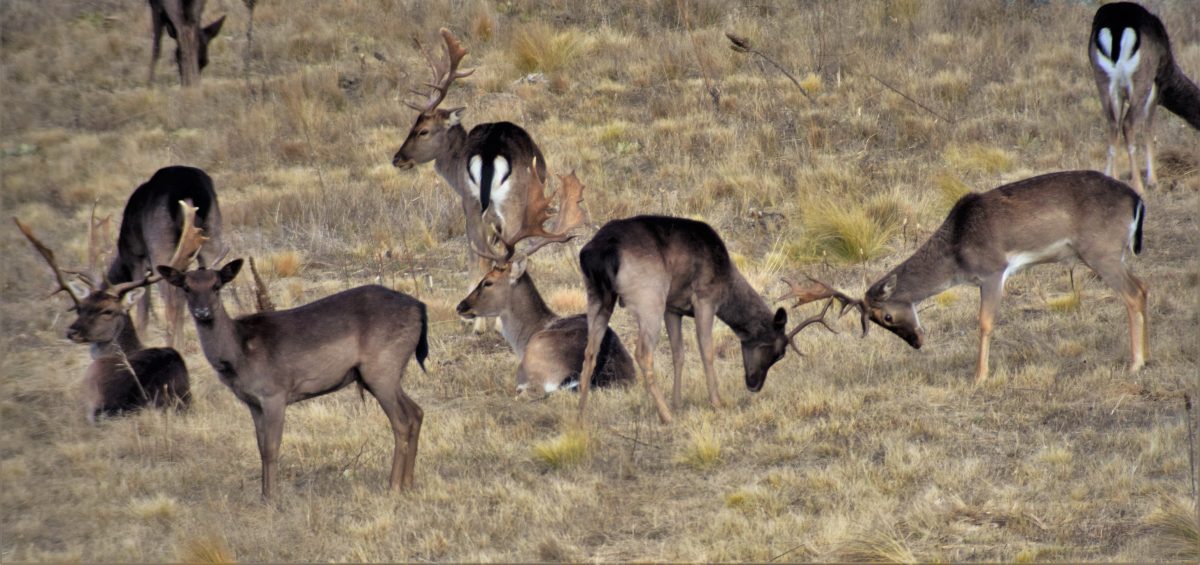
Fallow deer are especially common around Lake George, near the ACT. Photo: Zac McKenzie.
Among these new tools are drones.
On 10 April, a team from the Department of Agriculture, Fisheries and Forestry (DAFF) flew a drone along a stretch of the Murrumbidgee River in the Ginninderry area.
The drone was fitted with a ‘HydraSleeve’, which allowed it to scoop up water and take it back to where the pilot was stationed.
Similar to how forensic police track down strands of hair or fingerprints at a crime scene, each sample would be tested back at a lab for traces of the ‘Environmental DNA’ (or eDNA) of fallow deer.
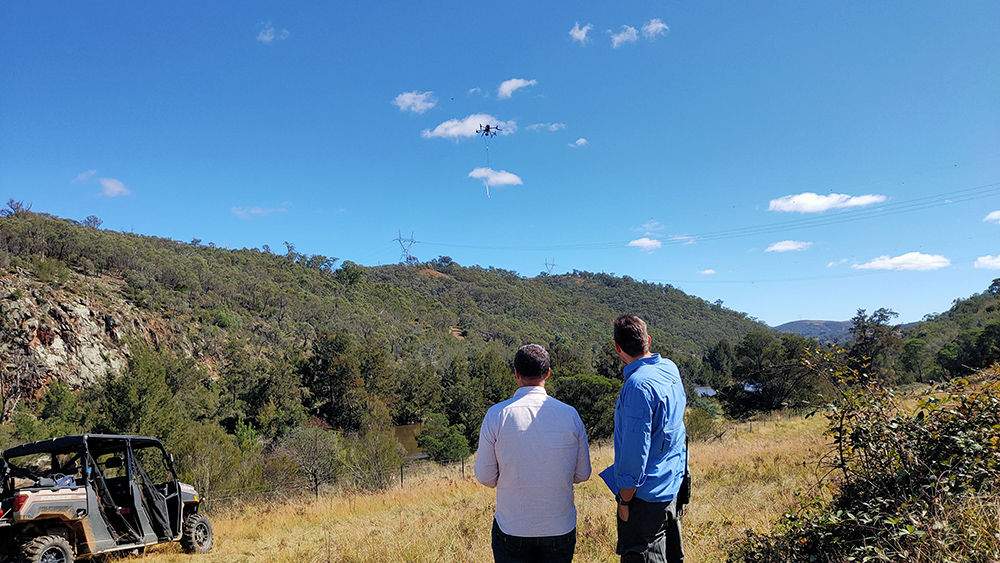
The drone saved the government team from having to collect water samples on foot. Photo: Department of Agriculture, Fisheries and Forestry.
In the words of the World Wildlife Organisation, “a single sample containing eDNA can be used to detect endangered species, study the impacts of climate change, alert us to invisible threats such as pathogens, and assess the overall health of aquatic and terrestrial ecosystems”.
Basically, scientists can work out the deer’s browsing habits without having to directly observe them, and more quickly come up with ways to combat them.
“It took the team just 15 minutes to sample the water needed using the drone,” DAFF Research and Innovation director Jessica May said.
“Previously, sampling by foot took over one hour due to tough surrounding terrain.
“This time-saving method will help us focus our resources and save on operational expenses when taking samples across a large geographic area.”
In a place as untouched as the Ginninderry Conservation Corridor, it’s safter too. A departmental spokesperson told Region it saves having to traverse “dense, snake-ridden and slippery terrain”.
In total, the drone collected seven samples over five square kilometres and four sites along the river. The eDNA testing came back with positive results for fallow deer in two of the sites.
“Now we have seen its potential, drone sampling may be used to detect the presence of native and invasive species that shed DNA into the environment, like avian influenza in water birds,” Ms May said.
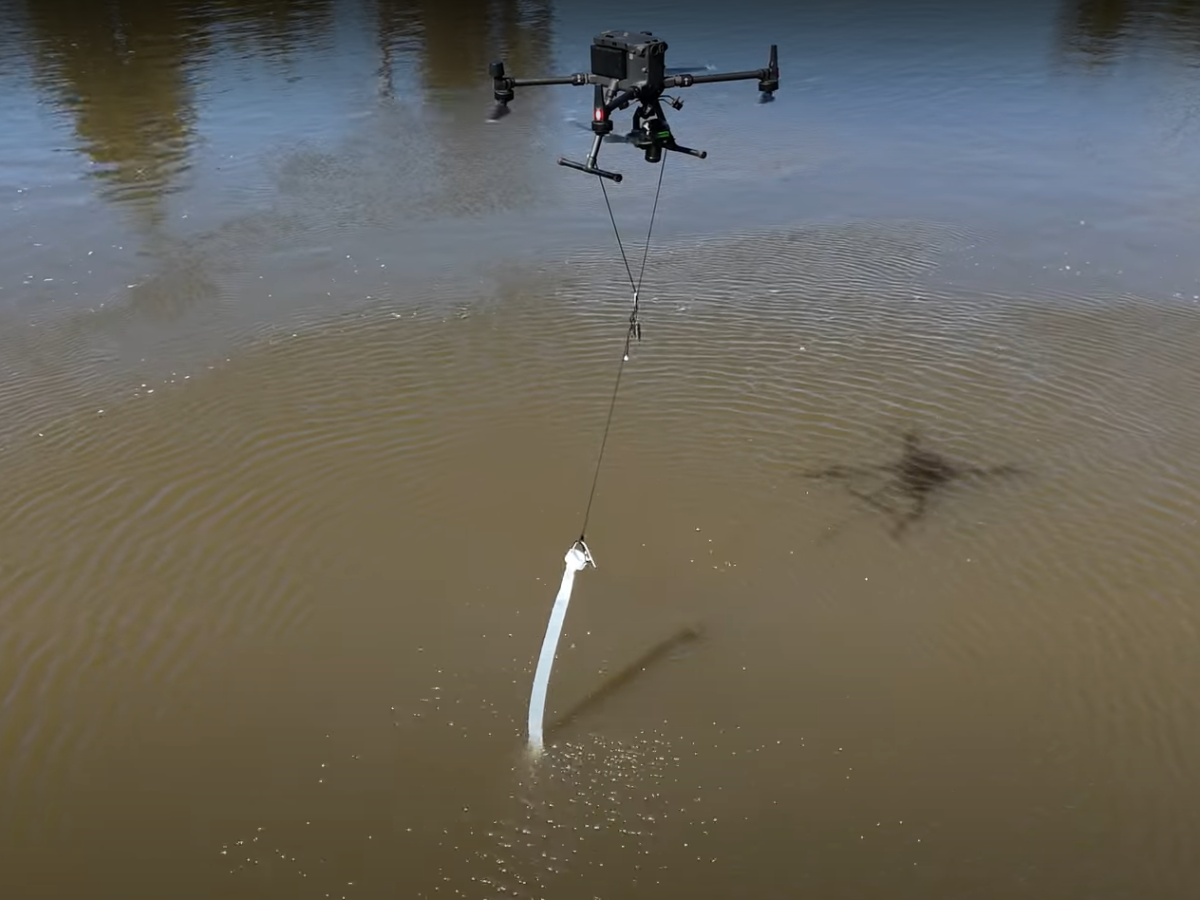
Collecting a water sample. Photo: Department of Agriculture, Fisheries and Forestry.
The department partnered with the Ginninderry Conservation Trust, as well as the University of Canberra (UC), Department of Climate Change, Energy, the Environment and Water, and National eDNA Reference Centre on the project.
The Ginninderry Conservation Trust’s Riparian Restoration and Education Officer, Bridie Noble, said they were approached by the government due to the high population of deer in the corridor and ease of access to the river.
“The Trust also knows the land very well and was able to show the team the easiest access points to different water points,” she added.
“It’s a very innovative and exciting trial that could potentially provide some really useful data about species’ presence in places that would otherwise be difficult or time-intensive to reach.”












